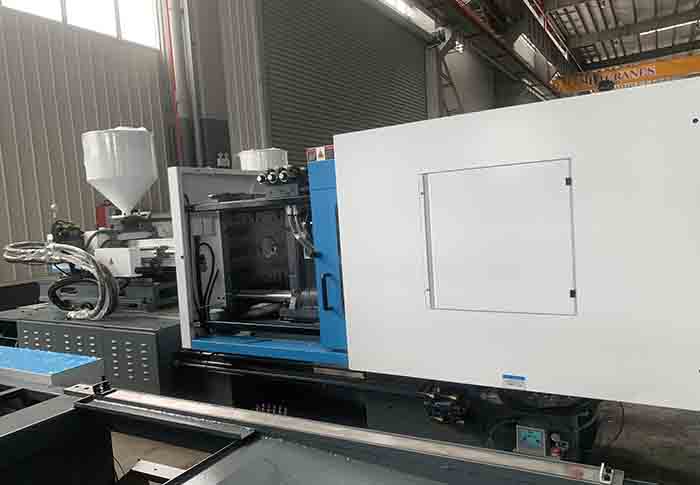The application and advantages of injection molding machines in lighting fixture manufacturing

This article mainly introduces the application of injection molding machines in the manufacturing of lighting fixtures and their advantages. As a widely used production equipment in the manufacturing industry, injection molding machines are increasingly being used in the field of lighting fixture manufacturing. This article will elaborate on the working principle of injection molding machines, their applications in the manufacturing process of lighting fixtures, and the advantages of using injection molding machines in lighting fixture manufacturing.
I. Working Principle of Injection Molding Machines
Injection molding machines are equipment used for producing plastic products. The working principle involves heating thermoplastic or thermosetting plastic raw materials to a melted state, then injecting the molten plastic under high pressure into a mold. After cooling and solidification, the mold is opened, and the desired shape and size of the plastic product is obtained. Injection molding machines have the advantages of high production efficiency, short molding cycle, and stable product quality, making them widely used in the manufacturing industry.
II. Applications of Injection Molding Machines in Lighting Fixture Manufacturing
1、Housing Manufacturing
The housing of a lighting fixture is an important component that protects the internal light source and circuitry. Its shape and size greatly affect the performance and appearance of the lighting fixture. Injection molding machines can quickly and accurately produce various shapes and sizes of housings to meet the design requirements of lighting fixtures. Additionally, by changing the shape and size of the mold, injection molding machines can achieve diverse housing designs, enhancing the market competitiveness of lighting fixtures.
2、Lampshade Manufacturing
Lampshades are an essential part of lighting fixtures, primarily serving to protect the light source, prevent direct light from reaching the eyes, and provide heat dissipation and aesthetic appeal. Injection molding machines can produce lampshades made of various materials such as plastic and glass in different shapes, meeting the needs of different lighting fixtures. Furthermore, by adding color masterbatches, injection molding machines can achieve color diversity in lampshades, improving the aesthetic appeal of lighting fixtures.
3、Radiator Manufacturing
Lighting fixtures generate a large amount of heat during use, which can affect their performance and lifespan if not dissipated in time. Injection molding machines can produce various shapes and sizes of radiators that effectively transfer heat generated by lighting fixtures, ensuring their normal operation. Additionally, by changing the shape and material of the radiator, injection molding machines can improve heat dissipation efficiency and reduce the operating temperature of lighting fixtures.
4、Connector Manufacturing
Various components of a lighting fixture need to be connected together through connectors to ensure stability and reliability. Injection molding machines can produce connectors of various shapes and sizes such as screws and nuts to meet assembly requirements for lighting fixtures. Furthermore, by changing the shape and material of connectors, injection molding machines can improve their strength and wear resistance, extending the service life of lighting fixtures.
III. Advantages of Using Injection Molding Machines in Lighting Fixture Manufacturing
1、High Production Efficiency
Injection molding machines adopt an automated production mode, enabling continuous and rapid production processes, significantly improving production efficiency. Compared to traditional manual or semi-automatic production methods, injection molding machines have higher production efficiency in lighting fixture manufacturing, helping to reduce production costs and enhance market competitiveness.
2、Short Molding Cycle
The molding cycle of injection molding machines is typically only a few seconds to a few minutes, much shorter than other molding methods. This allows injection molding machines to have faster production speeds in lighting fixture manufacturing, helping to shorten product launch time and gain market share.
3、Stable Product Quality
During the production process, injection molding machines can achieve precise temperature control and pressure control, ensuring uniformity and stability of plastic raw materials in a melted state. Additionally, by adjusting the shape and size of the mold, injection molding machines can achieve high-precision molding of products. Therefore, injection molding machines have stable product quality in lighting fixture manufacturing, contributing to improved product reliability and service life.
4、Design Flexibility
Injection molding machines can achieve diverse product designs by changing molds, meeting the needs of different lighting fixtures. Furthermore, by adding color masterbatches, metal powders, and other materials, injection molding machines can achieve functional and aesthetic design capabilities for products. Therefore, injection molding machines have high design flexibility in lighting fixture manufacturing.
5、Energy Conservation and Environmental Protection
During production, injection molding machines can achieve efficient utilization of plastic raw materials, reducing waste generation. Additionally, by optimizing production processes and reducing energy consumption, injection molding machines can achieve energy conservation and environmental protection. Therefore, injection molding machines have excellent environmental performance in lighting fixture manufacturing.
In conclusion, injection molding machines have broad application prospects and significant advantages in lighting fixture manufacturing. With the continuous development and innovation of the lighting fixtures market, the application of injection molding machines in lighting fixture manufacturing will become increasingly widespread, providing strong technical support for the development of the lighting fixtures industry.


